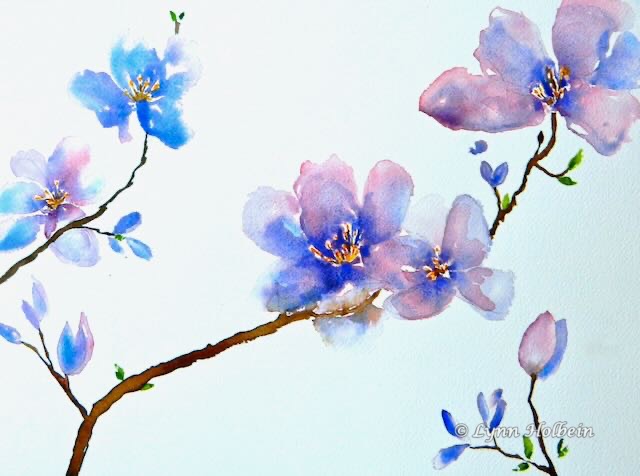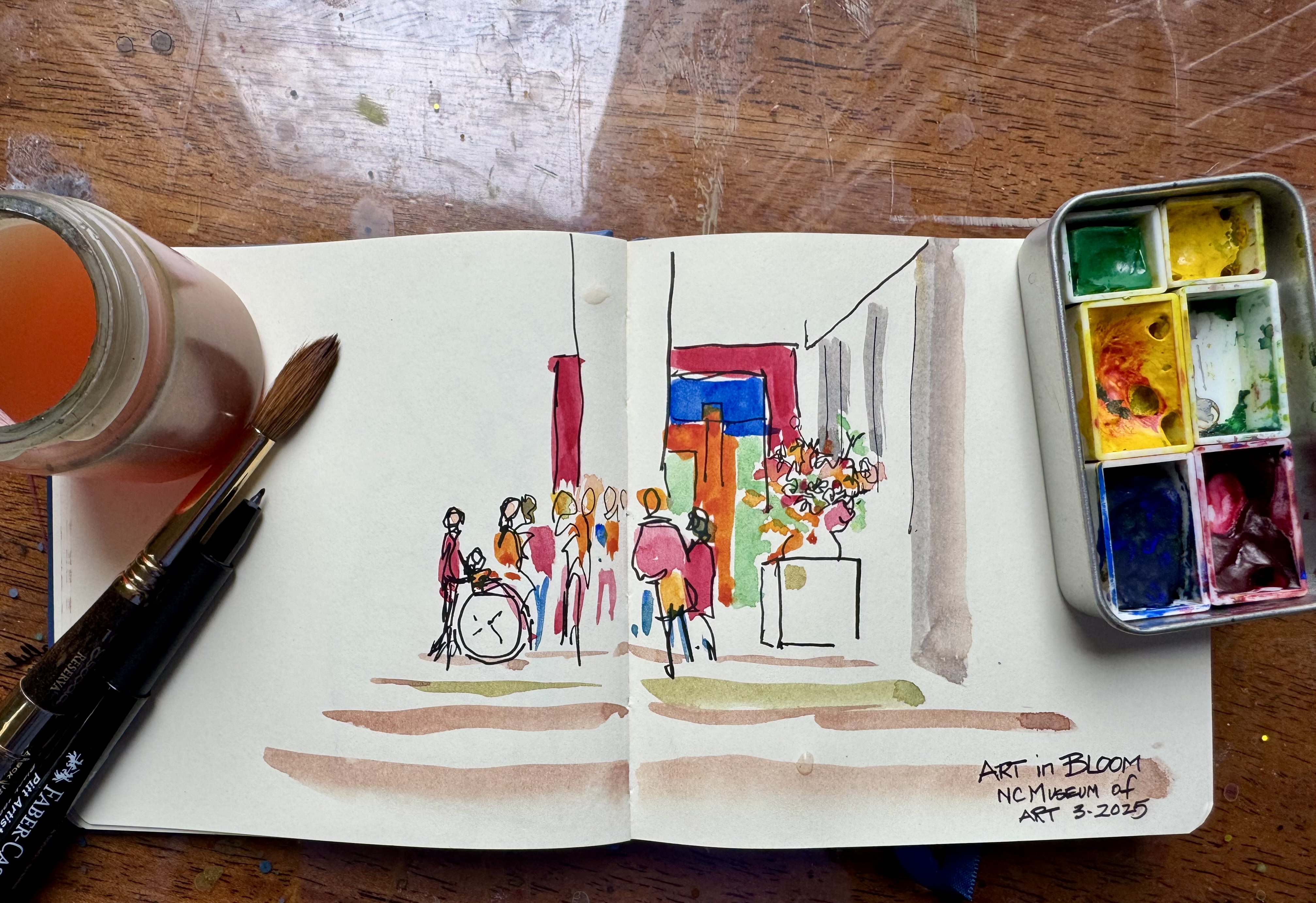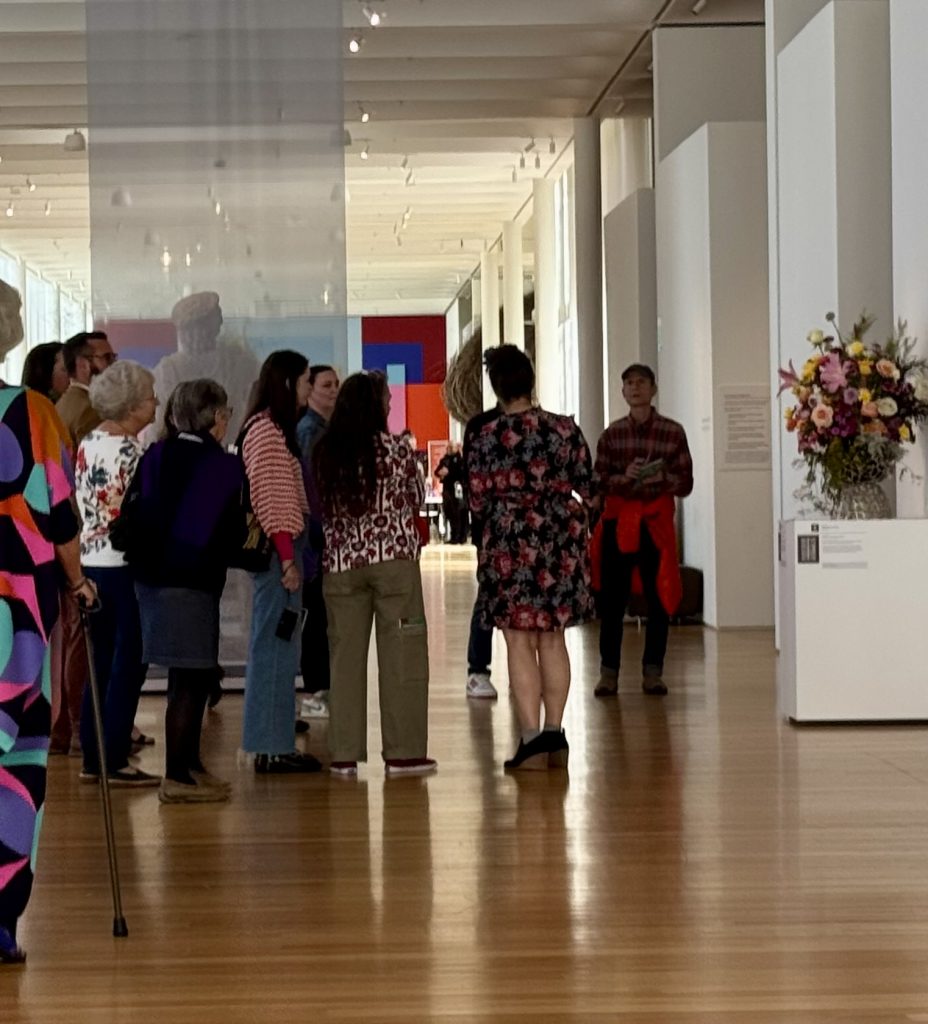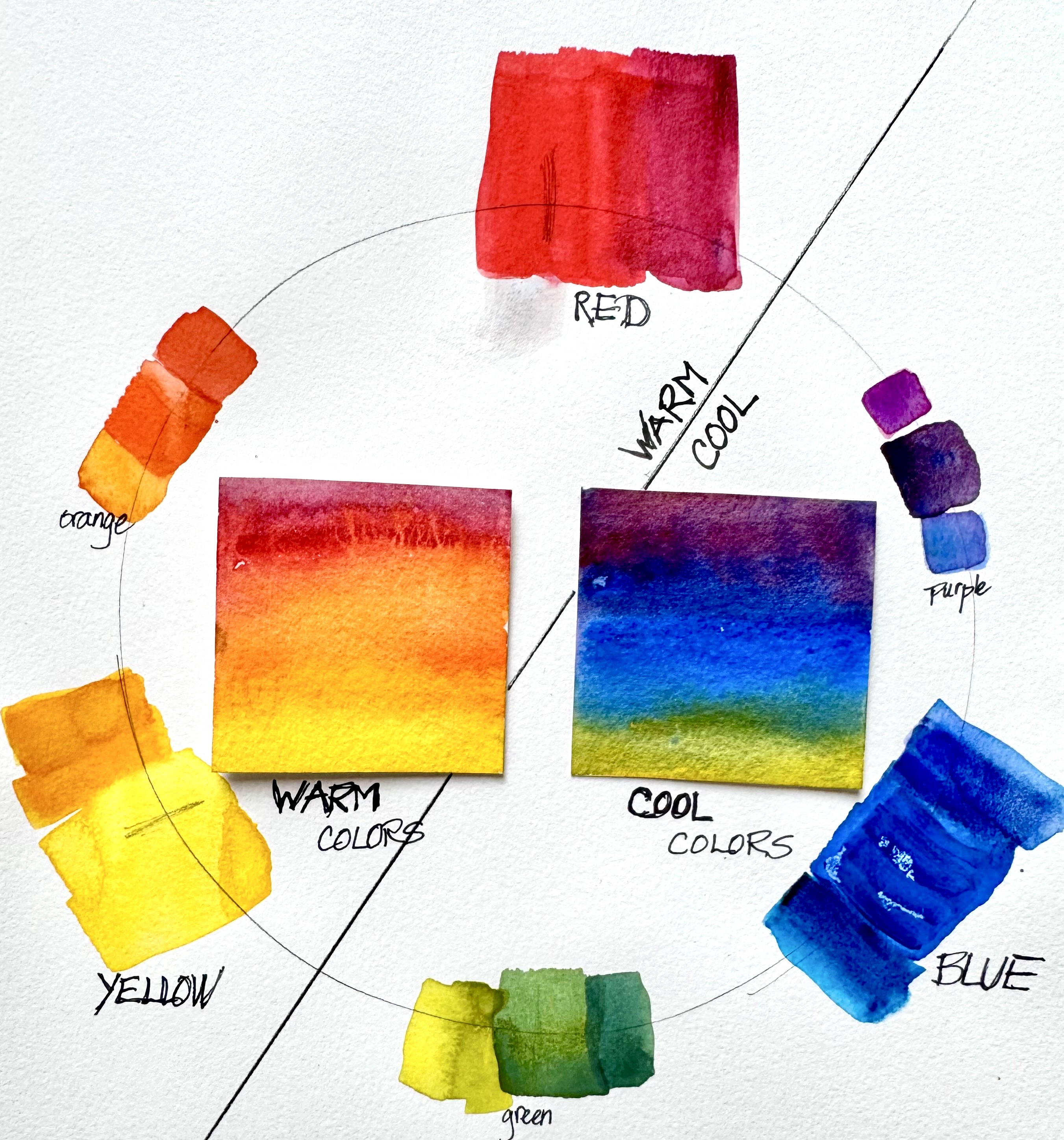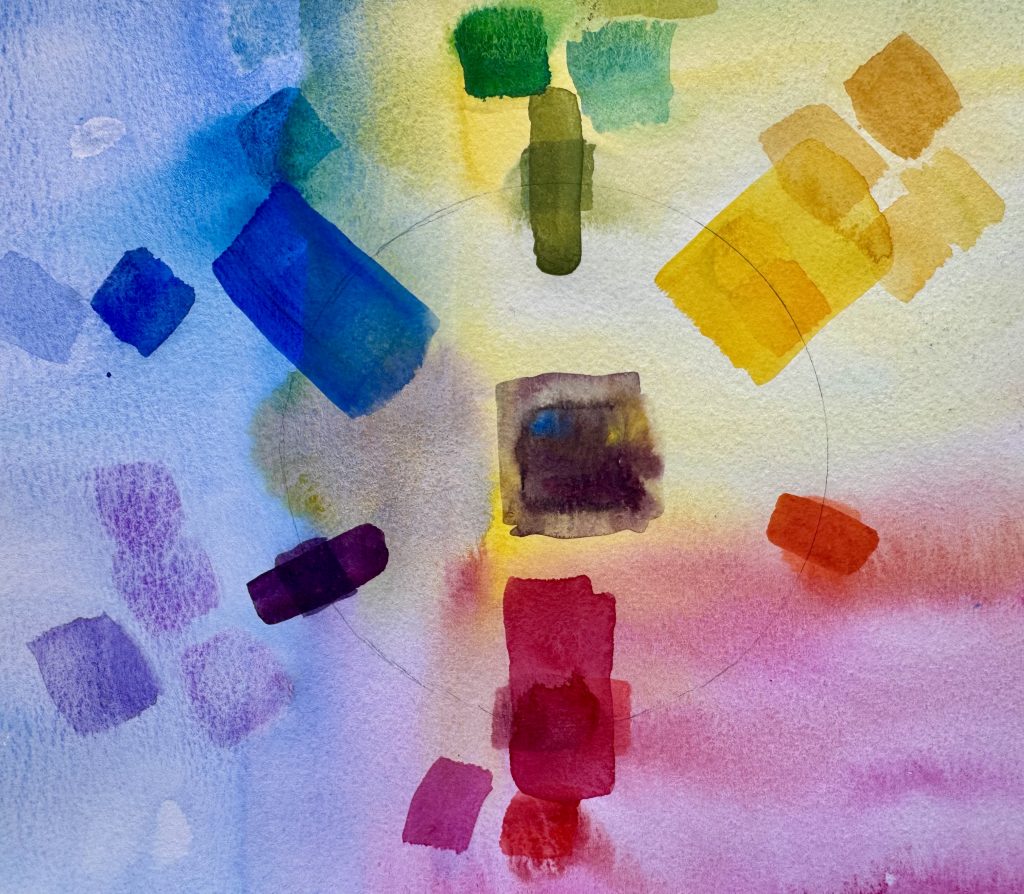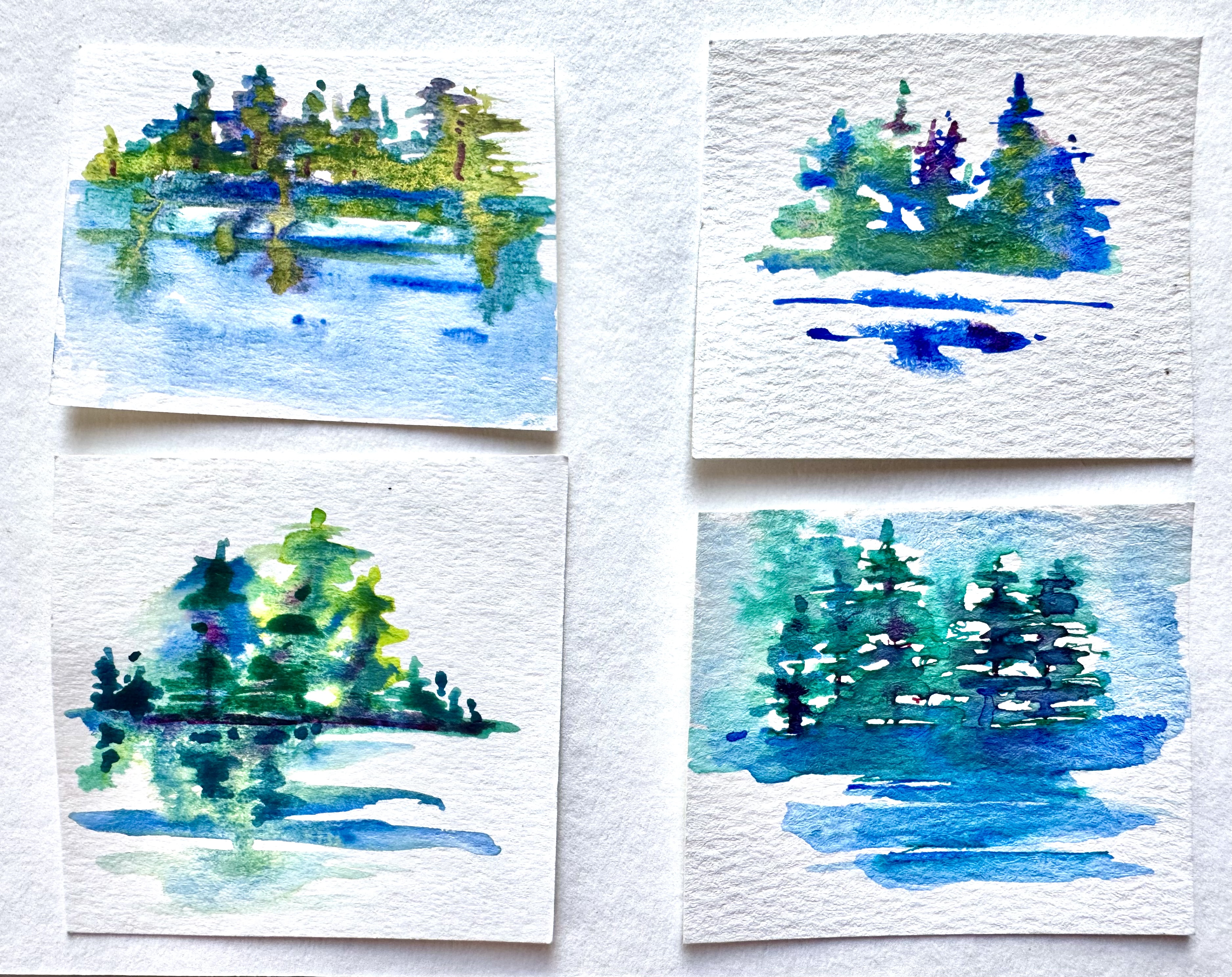The buds are getting fatter and fatter until they burst open. The best time of year.
If pink and blue had been mixed together evenly on my palette before painting, these dogwood petals would be uniformly lavender. But instead I painted each shape with clear water, then dropped in blue and pink separately, with uneven amounts of each color. More interesting, don’t you think?
